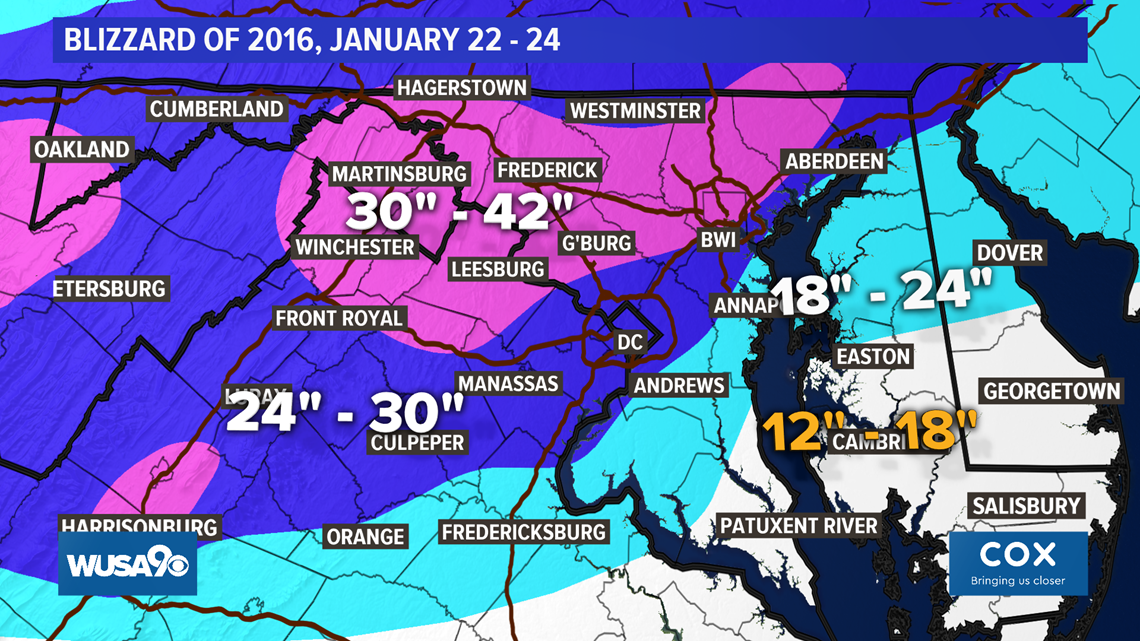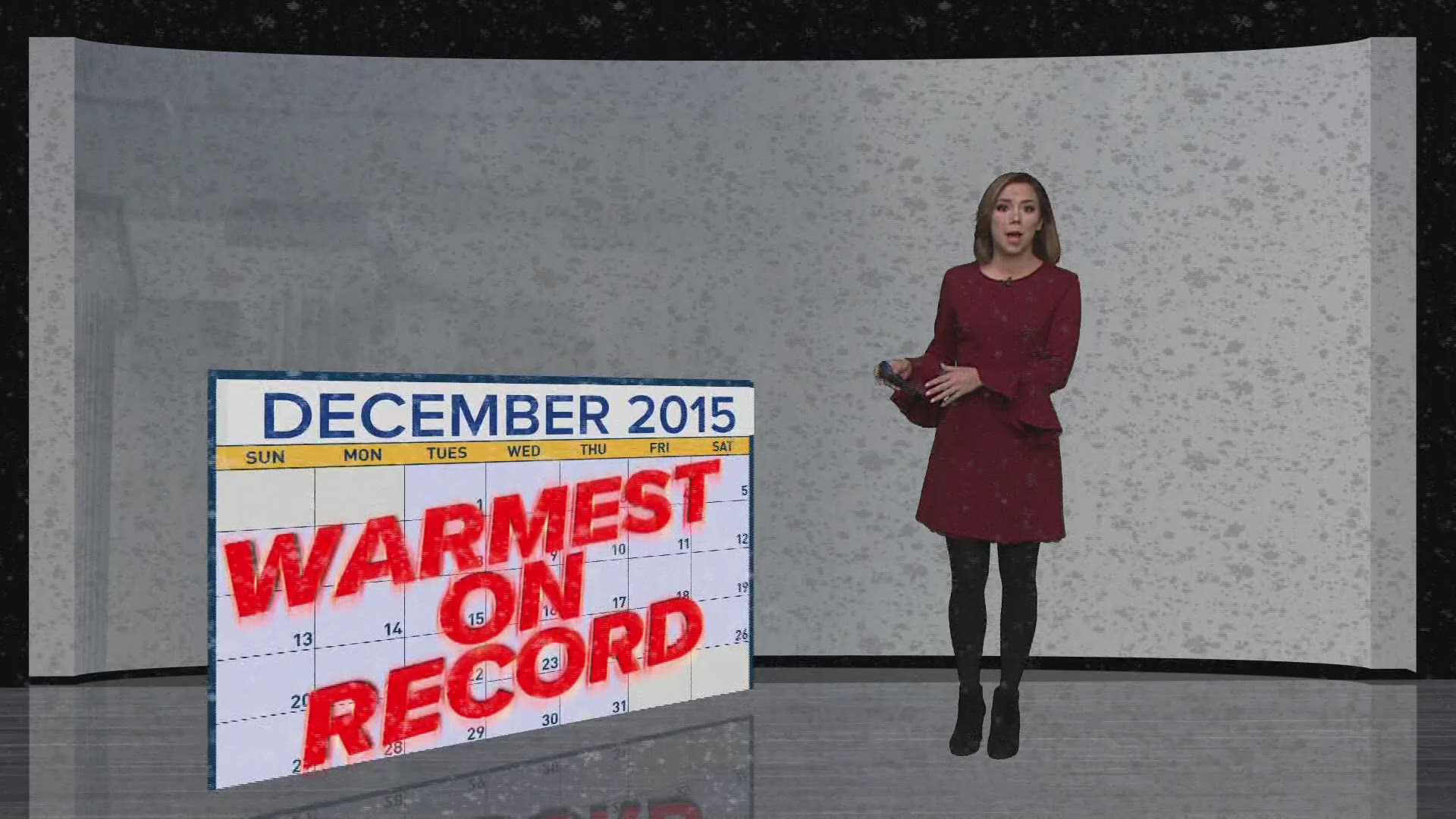WASHINGTON — Five years ago, 'Snowzilla' clobbered 434,000 square miles of the East Coast with heavy snows and strong winds.
Ranked a Category 4 or 'Crippling' winter storm on NOAA's Northeast Snowfall Impact Scale, the blizzard of 2016 will forever be remembered as one of the most impressive storms to pound the D.C. area with heavy snow and blizzard conditions.
The entire week leading up to the blizzard was cold in the DMV.
D.C.'s high temperature stayed below 40°. This colder than average weather helped create favorable conditions for a lot of snow when an area of low pressure developed in the Deep South and tracked up the East Coast. It was the perfect track for a bulls-eye, heavy snow and blizzard conditions in the D.C. area.
Snow began on Friday afternoon, Jan. 22, and turned heavy by mid-evening. Heavy snow continued Friday night and all day Saturday, with snow rates at times between one to two inches per hour. The storm did not let up until late Saturday night, some time around midnight Sunday.
Snow totals broadly ranged across the area. Many suburbs south and east of D.C. picked up just over a foot. North and west of D.C., snow totals were two to three feet, with larger amounts in a few locations.
Officially, 17.8" of snow was measured at Reagan National.
Although a little lower than surrounding areas in D.C., this number was high enough to tie with the 2010 "Snowmaggedon" for the fourth largest snow storm on record for D.C.
Dulles Airport measured 29.3" of snow, its second largest snowfall on record. BWI Airport came in at 29.2" of snow, it's largest on record.


In the aftermath, snow crews worked on overdrive for days trying to clear all of the snow off the streets, neighborhoods and sidewalks. D.C. spent a grand total of $41 million dollars on snow removal from the storm. The astonishingly high cost was largely due to a lack of snow removal contracts in advance, resulting in the last minute signings without negotiations.
From a scientific perspective, 'Snowzilla' was a huge win from a forecasting standpoint. WUSA 9 was warning of the snow potential nearly a week in advance, with a strong signal in weather models for this potential big coastal storm.
The irony about this storm is that the 2015-2016 winter got off to a poor start for snow lovers. In fact, if we take away that one storm we only received four inches of snow that winter.
December 2015 was the warmest on record in the Nation’s Capital. And D.C. didn’t experience the first measurable snowfall of the season until Jan. 17 – a record for the latest in the winter season Washington had its first measurable snowfall. Just a few days later, 'Snowzilla' struck.

